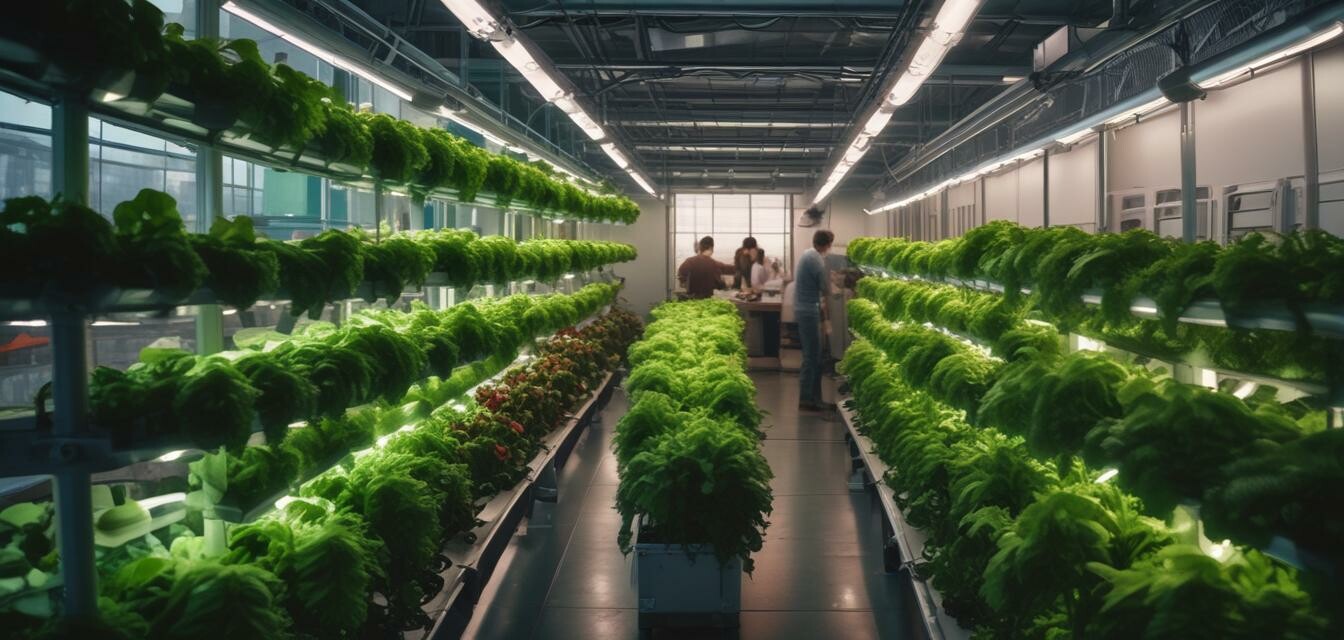
Hydroponics and Vertical Farming: A Perfect Match
Key Takeaways
- Hydroponics maximizes space efficiency, making it ideal for urban environments.
- Incorporating vertical farming techniques can significantly enhance crop yields.
- Hydroponics reduces water usage compared to traditional soil-based farming.
- The technology involved in hydroponics is constantly evolving, driving innovation in vertical farming.
- Urban farmers can grow fresh produce year-round, regardless of seasonal constraints.
Introduction
As urban areas continue to expand, the quest for sustainable and efficient agricultural methods is becoming increasingly crucial. Hydroponics presents a revolutionary approach that eliminates the need for soil, allowing plants to grow in nutrient-rich water. When combined with vertical farming, this method offers an impressive solution to space utilization challenges in city environments. In this article, we will explore how hydroponics and vertical farming work hand in hand to create thriving agricultural ecosystems.
Understanding Hydroponics
Hydroponics is a method of growing plants without soil, utilizing a nutrient solution to deliver essential minerals directly to the roots. This technique provides several benefits over traditional farming:
- Enhanced growth rates and yields
- Reduced need for pesticides due to controlled environments
- Lower water consumption, making it an eco-friendly choice
- Year-round crop production, regardless of external weather conditions
Vertical Farming: The Future of Agriculture
Vertical farming involves growing plants in stacked layers or vertically inclined surfaces. This innovative farming technique takes advantage of limited space, especially in urban areas. Key features of vertical farming include:
- Utilization of artificial lighting to enhance plant growth
- Efficient water use through recirculating systems
- Integration of technology for monitoring and automation
- Reduction in transportation costs by growing food closer to consumers
Why Hydroponics and Vertical Farming Work Well Together
Combining hydroponics with vertical farming creates a synergy that maximizes both efficiency and productivity. Here are some reasons why these two methods complement each other:
| Aspect | Hydroponics | Vertical Farming |
|---|---|---|
| Space utilization | Minimal ground space required | Multi-layered structures optimize space |
| Water efficiency | Uses up to 90% less water | Recycles water in closed systems |
| Crop Yield | Higher yields in controlled environments | Increased plant density boosts overall production |
Innovations in Hydroponic Vertical Farming
Recent advancements in technology are continually reshaping the landscape of hydroponic vertical farming. Some innovations include:
- Smart Monitoring Systems: Sensors that track nutrient levels, moisture, and environmental conditions, allowing for real-time adjustments.
- LED Grow Lights: Energy-efficient lighting that mimics sunlight and promotes optimal plant growth.
- Automated Nutrient Delivery: Systems that ensure plants receive the ideal nutrient mix throughout their growth cycle.
Challenges to Consider
While hydroponics and vertical farming hold significant potential, they also come with challenges:
Pros
- High yield and faster growth rates
- Reduced reliance on pesticides
- Innovative farming methods lead to economic opportunities
Cons
- Higher initial setup costs
- Technical failures can lead to crop loss
- Requires knowledge of nutrient management
Real-World Applications
Across the globe, communities are embracing hydroponic vertical farming as a solution to food security and urban development challenges:
- Urban farms in New York City are producing fresh greens for local markets.
- Restaurants in Tokyo source their herbs from nearby vertical farms.
- Educational institutions are setting up hydroponic systems to teach students about sustainable agriculture.
Conclusion
The marriage of hydroponics and vertical farming is paving the way for a sustainable agricultural future. As cities grapple with the challenges of food production, leveraging innovative growing methods will be vital. Staying informed about trends in this sector can benefit both agricultural enthusiasts and urban dwellers eager to connect with their food sources. For more insights into hydroponics, check out our buying guides for essential system components or visit our news and trends section for the latest updates.

